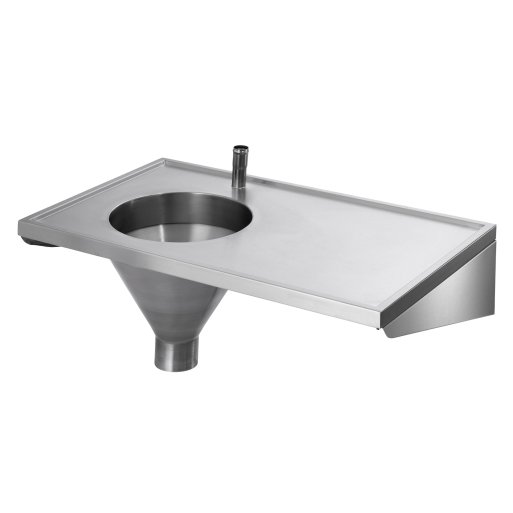Sluice sinks: what are they and why do I need one?
![sluice sink with drainer]()
Sluice sinks (also referred to as disposal units and slop hoppers) are designed for use in hospitals, nursing homes and GP surgeries to enable the safe and hygienic disposal of clinical waste, such as the contents of vomit bowls, drainage bags, bedpans, and urine bottles. They can also used in a domestic setting for individuals with chronic health conditions.
How do they work?
Sluice sinks are much the same as toilets in terms of both their appearance and operation. They are made up of a conical bowl into which the waste material is poured. The user then operates a lever, button or chain to activate the flush mechanism, which draws water down from a cistern and flushes the waste material down the soil pipe. The sluice sink is connected to the soil pipe with a ‘P’ or ‘S’ trap, which prevents foul smells from coming back up through the drain.
Why do I need one?
If sluice sinks look like toilets and operate like toilets, then why can’t you simply flush clinical waste down a toilet, rather than going through the hassle and expense of installing a sluice sink?
It may seem tempting, but keeping toilet and waste disposal facilities separate is absolutely essential for reducing the risk of cross-contamination and halting the spread of infectious diseases.
Options
Sluice sinks come in two basic varieties: wall-mounted and floorstanding. A wall-mounted sluice sink can be installed at any height, meaning that it can be easily integrated with existing fittings, improving ease of use and keeping splashback to a minimum.
Floorstanding sluice sinks tend to be more durable because they are fixed to the floor as well as the wall, minimising movement. A wall-mounted sluice sink can be made more robust with the addition of supporting legs, although this can make cleaning a little trickier.
Some models include a sink and drainage board for the purposes of handwashing and the cleaning of medical appliances such as bedpans. These combination units are available in right-handed or left-handed configurations.
You can choose from an exposed cistern, which is mounted on the wall above the sluice sink, or a concealed cistern, which can be installed in a duct directly behind the sluice sink. A concealed cistern is more discreet and takes up less space, but may not be an option depending on the location of the sluice sink and the layout of the building. Consider also the fact that a concealed cistern needs to be mounted within a wall cavity, meaning that installation can be a little more costly and time-consuming.
There are also several options when it comes to materials. In terms of the sluice sink itself, you can opt for stainless steel or vitreous china. In our experience, stainless steel sluice sinks are longer-lasting and easier to clean, although some consider vitreous china more aesthetically pleasing. You may wish to take the appearance of your existing fittings into account when making this decision.
Exposed cisterns are available in plastic or stainless steel finishes. Stainless steel cisterns are more durable, but also cost considerably more than plastic cisterns.
You’ll be pleased to learn that most models come with a drip-proof edge - peace of mind for anybody working with clinical waste.
Installation
Installing a sluice sink is a relatively simple process. All our sluice sinks come with a 4” outlet, which will need to be connected to a 4” soil pipe. The flushing rim of the sluice sink can be connected to the cistern either by a top entry flush pipe connection in the case of exposed cisterns, or a back entry flush pipe connection in the case of concealed cisterns.
When choosing your sluice sink, be sure to click on the ‘documentation’ tab for full installation instructions and specifications. Each of our products also comes with a handy dimensions guide and fitting sheet to help make the installation process as straightforward as possible.
For more information on sluice sinks and their uses, please feel free to download our handy guide.
-
Posted by Paul Thorn
25th February 2019

 UK's Largest Stockholding
UK's Largest Stockholding Next Day Delivery Available
Next Day Delivery Available UK Mainland Delivery from £15
UK Mainland Delivery from £15 Minimum 1 Year Guarantee
Minimum 1 Year Guarantee